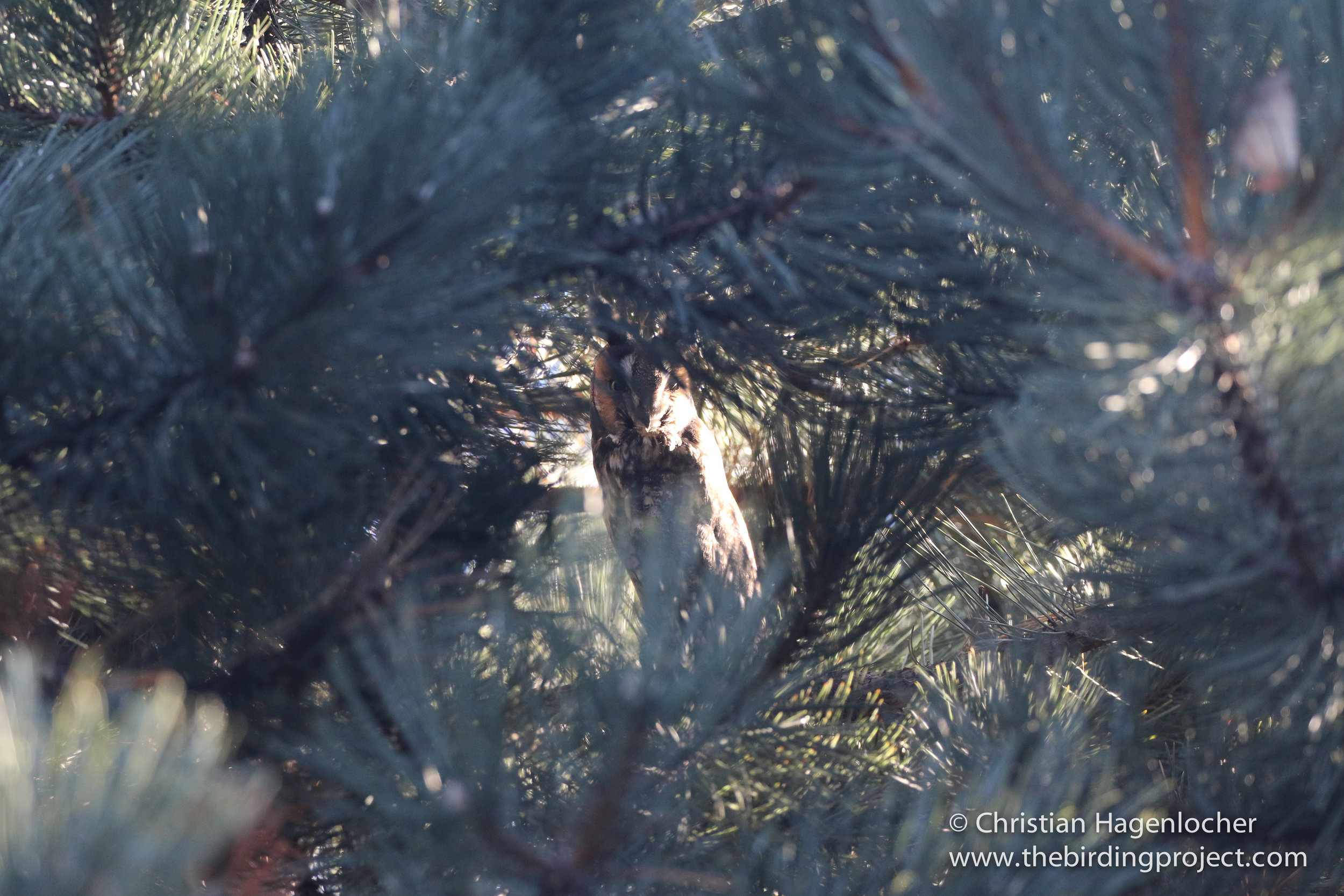The Long-eared Owl
The tall, prominent ear tufts of the Long-eared Owl are not ears at all- merely feathers. In fact, owls ears are asymmetrically positioned on the sides of their faces, buried underneath layers of specially-designed feathers for funneling sound. With one ear opening positioned higher than the other, sound reaches each ear at a different time, helping the owl to pinpoint directly where the sound is coming from. Owls can move the feathers on their faces, funneling sound towards their ears in a similar way to cupping your hands around your ears. Try it out!
My first Long-eared Owl encounter of my Big Year came near the end of March, near Denver, Colorado. I found a hotspot on eBird which had a couple species I hadn't seen yet, including LEOW (I'll use a 4-letter banding code to abbreviate 'Long-Eared OWl) Driving through the entrance of this location, I immediately spotted a thick line of Cedar trees, which stood out from the short grassland/agricultural landscape surrounding it. I parked and carefully walked around this clump of trees, looking for any hint of a bird. I saw nothing. I birded other parts of this park and then before leaving, I decided to walk through this clump of trees, and found a LEOW which flushed from an old magpie nest. Not wanting to disturb the owl further, I left the area, adding the bird to my year list, but sadly without a photo. I finished the year without seeing another Long-eared Owl after that day, and started this year with that bird at the top of my list to see and photograph, if an ethical opportunity presented itself. Luckily for me, the other day that opportunity came!
How to Find Long-eared Owls
Several pellets lay beneath the tree I found a Long-eared Owl perched.
The Long-eared Owl is a difficult species to find, due to its cryptic plumage, elongated posture, and preference to roosting in dense pine and cedar thickets. However, if you visit the right places during the right time of year, maybe you will find a Long-eared Owl on your own! Before walking into a clump of pine or cedar trees, try scanning the ground below them with your binoculars first. Signs that indicate owls are using the trees include gray pellets (regurgitated clumps of fur, bones, and feathers) and white droppings, often called "whitewash".
Some species of owls use the same roosting tree throughout the winter, and others select different trees each night based on wind direction, disturbance, or where they caught prey the night before. If many people visit the same location repetitively and flush the owls, the consequence could be a dead owl. Flushing an owl in the day may cause the owl to use extra energy, and exposes it to harassment from birds like crows and makes it visible to predators.
You can get a good idea of owl habitat using eBird. Remember that posted sightings are most likely generalized, at a Hotspot location. Please consider the well-being of the owls before sharing the exact location of owls you may see roosting during the winter time. They need these safe places to rest undisturbed, so they can hunt the following night with full energy reserves! Being a raptor is tough!
Sometimes an owl may not look like an owl at all!
Getting an unobstructed view of roosting owls is rare- so keep your distance and enjoy from afar!
A telephoto lens, like this 100-400 Canon zoom lens, can be helpful in zooming in for close detail.
Facts about the Long-eared Owl
-Will often roost colonially, forming large groups- sometimes up to hundreds of birds! Check out this video from the BBC's Planet Earth II of the largest known roost in the world!
-A group of owls roosting together is called a 'Parliament'
-Eat voles, mice, and rats, and even young rabbits! (We found a rabbit leg under the roost tree)
-Long, low hoots can be heard nearly a half-mile away!
Can you spot the Long-eared Owl in this photo?
All images in this post were made without using flash, and were taken without flushing the owls.











